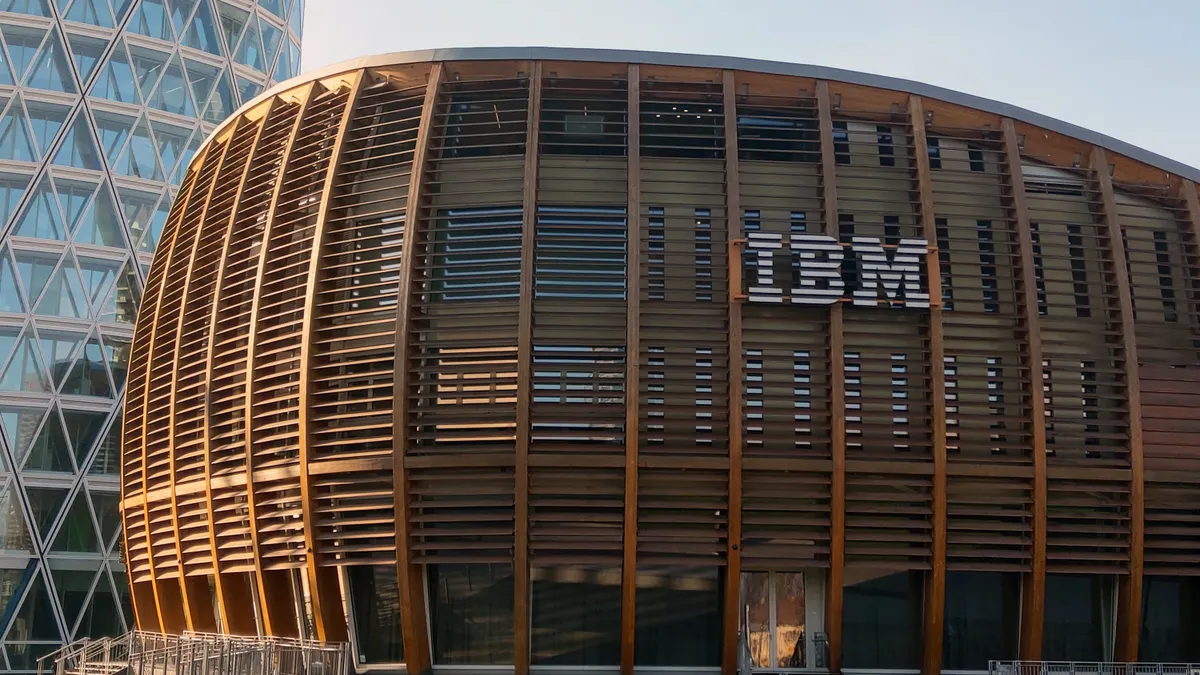Dive Brief:
- IBM saw its software segment dominate revenues as the company prepared to deliver its next generation z17 mainframe in eight weeks, executives said during a Q1 2025 earnings call Wednesday.
- The company reported $14.5 billion in first quarter revenues — up 1% year over year — driven largely by software, which accounted for nearly 45% of IBM’s business, up from 40% a year ago. “Our mix shift towards software is driving growth,” SVP and CFO James Kavanaugh said.
- IBM’s infrastructure revenues declined 6% as the z16 sales cycle wound down, but the company remained bullish on its flagship product line. "Mainframe is an integral part of our business portfolio overall, and it is an enduring platform that we are going to ensure that we prudently but aggressively manage,” said Kavanaugh.
Dive Insight:
Acquisitions fueled IBM’s shift to software. The company bought open-source platform provider Red Hat for $34 billion in 2019 and added Apptio and HashiCorp to its software portfolio in the last two years.
The pivot didn’t slow the pace of mainframe development. The z17, which arrives less than three years after its Z Systems predecessor, was designed with AI workloads in mind. Units are powered by the high-capacity Telum II processor and are equipped for the custom Spyre accelerator chip.
“We start testing very early with our clients … in private confidential gatherings,” Chairman and CEO Arvind Krishna said Wednesday. “Given what we showed them around security, around AI and around increased capacity, almost all of them resonated very positively to the mainframe.”
Despite massive migrations to cloud and concerns about a falloff in mainframe engineering talent, the platform continues to run more than two-thirds of global business transactions by value, according to IBM research.
“We run 45 of the top 50 banks around the world, 9 of the top 10 retailers, 4 to 5 top 10 airlines of the world,” Kavanaugh said. “We are going to protect those clients and what the mainframe brings to the table.”
The new Z Systems product line arrives at a time of IT budget reassessment by enterprises tracking the impact of President Donald Trump’s trade policy on the global economy. Despite a surge in PC shipments during the first three months of the year, Gartner analysts did not see a parallel uptick in end-user purchasing behavior.
IBM’s consulting segment, which accounted for roughly 35% of quarterly revenue, felt the pinch as some clients delayed decisions on discretionary IT projects, Krishna said. “Consulting tends to see headwinds before other parts of the business,” he added.
Company infrastructure and software supply chains are largely insulated from tariffs, according to Krishna, who said imported goods represent less than 5% of IBM’s overall spend.
While executives are scrutinizing IT budgets for potential cost reductions, most are reluctant to impede modernization, analysts told CIO Dive earlier this month. The pause on some U.S. tariffs announced April 9 opened a 90-day window for enterprises to reconsider purchasing strategies.
“We have not seen any material change in client-buying behaviors,” Krishna said. “In the near-term, uncertainty may cause clients to pause and take a wait-and-see approach. However, the value of hybrid cloud automation, data sovereignty and on-premise solutions becomes even more critical in volatile windows.”












